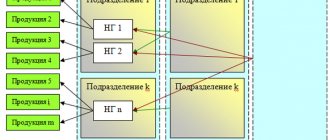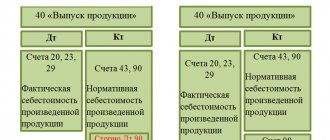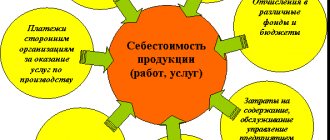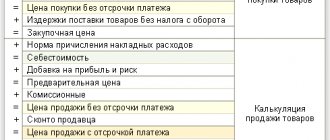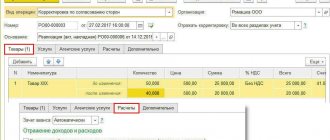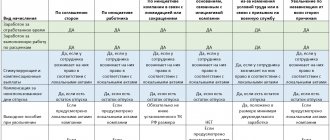What are cost calculation formulas?
Let's illustrate with an example what the problem is.
Imagine that a company purchases 1,000 chocolate bars at CU 30. every. The accounting entry will be like this:
- Debit. Inventories: CU 30,000 (1,000*30).
- Credit. Accounts payable: CU 30,000
This company then sells 200 chocolates at CU40. each. Wiring:
- Debit. Accounts receivable: CU 8,000 (200*40).
- Credit. Revenue from the sale of goods: CU 8,000
In addition, the company must reflect in its accounting the fact that some of the bars have left the warehouse. Accounting entry:
- Debit. Cost of sales: CU 6,000 (200*30).
- Credit. Inventories: CU6,000
In this very basic example, the company knew exactly what amount should have been recognized in cost of sales because the acquisition cost (purchase price in this case) was CU30. for 1 chocolate bar.
But what happens when a company buys candy bars at different prices?
For example, imagine that a company bought 100 bars at CU31, 150 bars at CU32.50, 200 at CU29. etc.
What is the cost of sales in this case?
This depends on the 'cost formula' or inventory valuation method the company uses. So there may be more than one correct answer.
Disadvantages of the FIFO technique
No matter how universal the method may seem, it still has its negative sides, which can affect the activities of the enterprise. These include:
- ignoring inflationary processes when accounting, which leads to an overestimation of the cost of inventories;
- an increase in the amount of tax liabilities due to an increase in the size of the organization’s financial results;
- complication of the cost planning process;
- deterioration in enterprise management and forecasting of future activities.
Perhaps all of the above points boil down to the first: insufficient attention to inflation processes. Uneven consumption of inventories can lead to the write-off at a much lower price of property that originally cost many times more. The result is inflated indicators that confuse management when drawing up a further development plan.
To avoid negative consequences, first of all, do not forget about the features of the method when analyzing the results of financial activities and planning the further development of the enterprise. Before using the FIFO method, it is advisable to carefully consider its need for an organization's accounting.
What does IAS 2 Inventories require?
In fact, IAS 2 Inventories states that for:
- inventories that are not generally fungible; and
- for goods or services that are produced and allocated to specific projects,
Cost must be calculated for each unit of inventory.
[cm. IAS paragraph 2.23]
This is quite unusual in practice, but it does occur. For example, when the goods are exclusive and unique, such as jewelry, antiques or certain types of cars.
But, usually, goods are interchangeable (for example, large volumes of goods). In this case, IAS 2 allows the use of:
- FIFO , that is, the first-in-first-out method or FIFO, “first in - first out”; or
- Weighted average method .
[cm. IAS paragraph 2.25]
IAS 2 does not allow the use of LIFO (last-in-first-out). The LIFO method is permitted by US GAAP, and perhaps some other national accounting rules.
| Comparison of cost calculation formulas | ||
| FIFO | Weighted average cost | LIFO |
| IAS 2 allowed | IAS 2 allowed | IAS 2 not allowed |
| Oldest purchases sold first | Cost per unit of inventory = weighted average | Latest purchases sold first |
Now let's return to the example and explain all three formulas for calculating cost using the example of sales and purchases of chocolate.
FIFO write-off method: advantages
The use of this method will appeal not only to accountants, but will generally have a positive impact on the activities of the enterprise. The most advantageous and convenient qualities for maintaining warehouse accounting using FIFO are:
- simplification of collection and reflection of information and high productivity of the accountant;
- ideal compatibility taking into account perishable products;
- ensuring lower levels of stale reserves;
- increasing the economic value of the enterprise, which may be beneficial for certain categories of legal entities;
- high profit margins can attract investors and characterize the company's creditworthiness from the best side.
The FIFO valuation method has an irreplaceable practical value: simplicity of accounting organization. To fully understand this advantage, consider a hypothetical example, without numerical data:
Enterprise N receives MPZ in small batches. As they are used, the cost of each of them increases, and the reserves themselves are consumed unevenly. At the end of the month, it becomes necessary to take into account the balances from each delivery and the amount of inventory consumed. With the usual accounting methodology, the accountant will have to perform many difficult and routine operations: balances must be calculated for each batch separately, and their value only increases in the next period. FIFO is a method that allows the accountant to write off balances at the cost of the last batch from the end. This makes the calculations much simpler.
An example of inventory accounting according to IFRS using various cost formulas.
ABC, a candy and chocolate distributor, made a number of purchases of a new chocolate bar during 20×1:
- January 10: 1,000 units at 28;
- February 14: 1,500 units at CU28.20;
- March 17: 3,000 units at CU28.40; and
- June 18: 2,500 units at CU28.55
Because this is a new product and a major advertising campaign is planned after 1 July, ABC Company sold only one batch of 4,200 units to its largest customer for a total of CU159,600 on 2 May 20×1.
You need to calculate the inventory value of a new product, ABC, at 30 June 20x1 (excluding other components of purchasing costs).
Solution.
As mentioned above, the answer greatly depends on the costing formula used.
Although we clearly know how much inventory was received at the time of purchase, the cost of inventory shipped from the warehouse at the time of sale must be calculated using one of the costing formulas above.
In addition, the total sale price is CU159,600. is given here only to confuse you. It is NOT relevant for calculating the cost of inventory in a warehouse - it is the selling price, not the cost.
Regardless of the cost calculation formula used, we can calculate the number of chocolate units in stock (warehouse balances):
1,000 + 1,500 + 3,000 + 2,500 – 4,200 = 3,800 units.
Now we use various costing formulas to determine the cost of these 3,800 units.
How to account for the cost of inventory using the FIFO method?
This method can be called "chronological".
The reason is that using this method you "sell" the items from the warehouse in the same order in which they were purchased.
In our example, when ABC sold 4,200 units of chocolate, we assume that, using the FIFO method, the following items left the warehouse:
- All units purchased on January 10 - 1,000 units at CU28.
- All units purchased on February 14 - 1,500 units at CU28.20, and
- Balance of 1,700 units (4,200 - 1,000 - 1,500), purchased on March 17 at CU 28.40.
You can calculate the cost of sales at the time of sale, but that is not the question.
The question is, what will be the cost of the inventory of chocolate bars on June 30, 20×1?
If you assume that the oldest purchases leave the warehouse first, it is logical to assume that the latest purchases will remain.
There are 3,800 units of inventory in the warehouse:
- 2,500 units from purchase on June 18 at CU 28.55. - this will amount to CU 71,375; and
- the remaining 1,300 units are from the purchase on March 17 at CU 28.40. - this will amount to CU 36,920.
Thus, the total value of chocolate inventory, calculated using the FIFO cost formula, as of June 30 is CU108,295.
How to account for the cost of inventory using the LIFO method?
This method is very similar to FIFO, with one big difference: here you assume that when selling, the most recent purchases are leaving the warehouse .
As a result, the oldest purchases remain in the warehouse until all inventory is sold.
This is closely related to the main reason why LIFO is prohibited by IAS 2.
IFRS standards largely focus on balance sheet metrics. Every amount on your balance sheet should reflect current market and economic conditions as closely as possible, and that is NOT what the LIFO method does.
Why?
Because when you write off the most recent purchases at the most recent prices to cost of sales and keep the oldest purchases in your warehouse and on your balance sheet, the value of your inventory on your balance sheet will reflect the cost of the oldest purchases.
In other words, the LIFO method records the obsolete cost of inventory. This situation is only true in a market with very stable (frozen) prices and in a business with slow inventory turnover.
Additionally, LIFO tends to increase cost of sales .
Now let's look at our example using the LIFO cost formula.
In this case, you need to make approximately the same calculation as for the FIFO method, but in reverse order, for old purchases.
In addition, sales need to be taken into account. When selling, the cost of the chocolate bars was calculated based on the latest purchases available in the warehouse.
Therefore, the 4,200 units sold on May 2 were written off from the warehouse from the following purchases:
- 3,000 units from the purchase on March 17 at CU 28.40. And
- 1,200 units from the purchase on February 14 at CU 28.70.
Thus, the 3,800 units remaining in inventory at June 30th include:
- 1,000 units from purchase on January 10 at CU 28.00 — in the amount of CU 28,000;
- 300 units from the purchase on February 14 at CU 28.70. — in the amount of CU 8,860 Remember that you sold 1,200 units of this purchase on May 2;
- the remaining 2,500 units are from the purchase on June 18 at CU 28.55, in the amount of CU 71,375.
The total value of inventories as at 30 June using the LIFO method is CU107,875.
The table below shows the contrast between the FIFO and LIFO methods:
| FIFO | date | Purchase | LIFO |
| January 10 | 1 000 * 28 | 1 000 * 28 | |
| The 14th of February | 1 500 * 28,20 | 300 * 28,20 | |
| 1 300 * 28,40 | March 17 | 3 000 * 28,40 | |
| 2 500 * 28,55 | June 18 | 2 500 * 28,55 | 2 500 * 28,55 |
| Total: 3,800 units at cost CU 108,295 | Total: 3,800 units at cost CU 107,835 |
What property is the FIFO method applicable to?
The activity of an enterprise is impossible without the purchase of assets involved in the production and sales cycle. A group of such property is called the organization's inventories. Inventories are assets that can be used in the form of materials or resources for the manufacture of products or further resale. These include:
- materials and raw materials;
- work in progress items;
- finished products in warehouse;
- goods purchased for sale;
- shipped goods;
- expenses written off for future periods;
- farmed and fattening livestock;
- other supplies and expenses of a similar nature.
Inventories are written off from the warehouse on a monthly basis and sent for sale or production. To account for such a business transaction, one of the methods is used, including the FIFO method. The procedure for registering the receipt and release of inventories is regulated by the accounting policy.
Results
The average cost write-off method is most convenient for most manufacturing enterprises. The application of the method is characterized by such basic aspects as special formulations in accounting policies, the organization of appropriate quantitative and total accounting and the choice of calculation methods.
Sources
- https://nalog-nalog.ru/uchet_mc/poryadok_spisaniya_materialov_po_srednej_sebestoimosti/
- https://nalog-nalog.ru/buhgalterskij_uchet/vedenie_buhgalterskogo_ucheta/primer_rascheta_po_metodam_fifo_i_lifo_v_buhgalterskom_uchete/
- https://BusinessMan.ru/new-uchet-po-metodu-fifo-metod-fifo-opredelenie-primenenie.html
- https://mischenco-group.com/fifo-i-fefo/
- https://online-buhuchet.ru/metod-fifo/
- https://www.itctraining.ru/biblioteka/logistika-ved/printsip-fifo-v-logistike/
- https://FB.ru/article/142154/metod-fifo—eto-metod-fifo-oznachaet
- https://www.audit-it.ru/articles/account/assets/a11/41819.html
- https://www.1cBIT.ru/blog/metod-fifo-fifo-v-torgovle-i-skladskom-uchete/
- https://iiotconf.ru/fifo-eto-metod-spisaniya/
